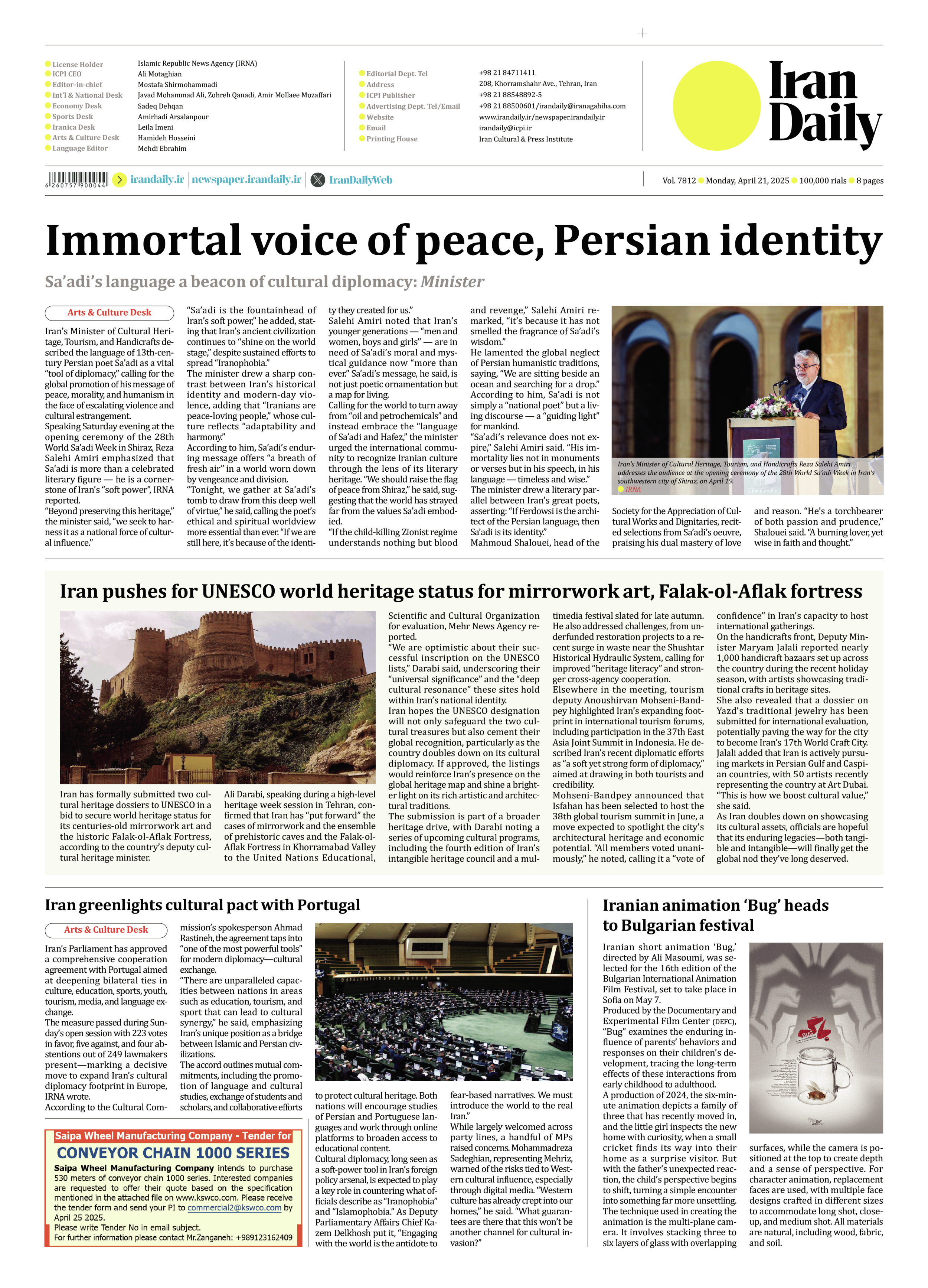
Copy in clipboard...
Iran pushes for UNESCO world heritage status for mirrorwork art, Falak-ol-Aflak fortress
Ali Darabi, speaking during a high-level heritage week session in Tehran, confirmed that Iran has “put forward” the cases of mirrorwork and the ensemble of prehistoric caves and the Falak-ol-Aflak Fortress in Khorramabad Valley to the United Nations Educational, Scientific and Cultural Organization for evaluation, Mehr News Agency reported.
“We are optimistic about their successful inscription on the UNESCO lists,” Darabi said, underscoring their “universal significance” and the “deep cultural resonance” these sites hold within Iran’s national identity.
Iran hopes the UNESCO designation will not only safeguard the two cultural treasures but also cement their global recognition, particularly as the country doubles down on its cultural diplomacy. If approved, the listings would reinforce Iran’s presence on the global heritage map and shine a brighter light on its rich artistic and architectural traditions.
The submission is part of a broader heritage drive, with Darabi noting a series of upcoming cultural programs, including the fourth edition of Iran’s intangible heritage council and a multimedia festival slated for late autumn. He also addressed challenges, from underfunded restoration projects to a recent surge in waste near the Shushtar Historical Hydraulic System, calling for improved “heritage literacy” and stronger cross-agency cooperation.
Elsewhere in the meeting, tourism deputy Anoushirvan Mohseni-Bandpey highlighted Iran’s expanding footprint in international tourism forums, including participation in the 37th East Asia Joint Summit in Indonesia. He described Iran’s recent diplomatic efforts as “a soft yet strong form of diplomacy,” aimed at drawing in both tourists and credibility.
Mohseni-Bandpey announced that Isfahan has been selected to host the 38th global tourism summit in June, a move expected to spotlight the city’s architectural heritage and economic potential. “All members voted unanimously,” he noted, calling it a “vote of confidence” in Iran’s capacity to host international gatherings.
On the handicrafts front, Deputy Minister Maryam Jalali reported nearly 1,000 handicraft bazaars set up across the country during the recent holiday season, with artists showcasing traditional crafts in heritage sites.
She also revealed that a dossier on Yazd’s traditional jewelry has been submitted for international evaluation, potentially paving the way for the city to become Iran’s 17th World Craft City.
Jalali added that Iran is actively pursuing markets in Persian Gulf and Caspian countries, with 50 artists recently representing the country at Art Dubai. “This is how we boost cultural value,” she said.
As Iran doubles down on showcasing its cultural assets, officials are hopeful that its enduring legacies—both tangible and intangible—will finally get the global nod they’ve long deserved.







